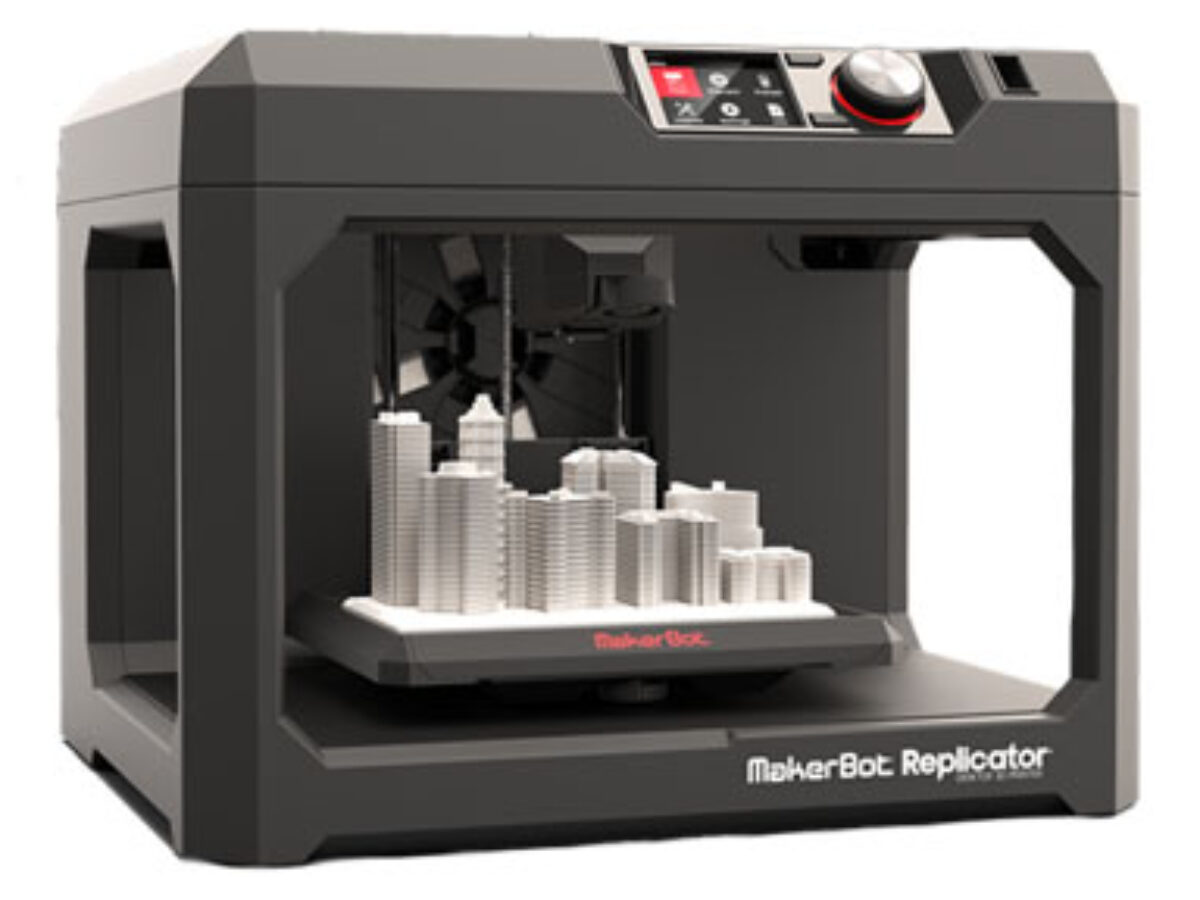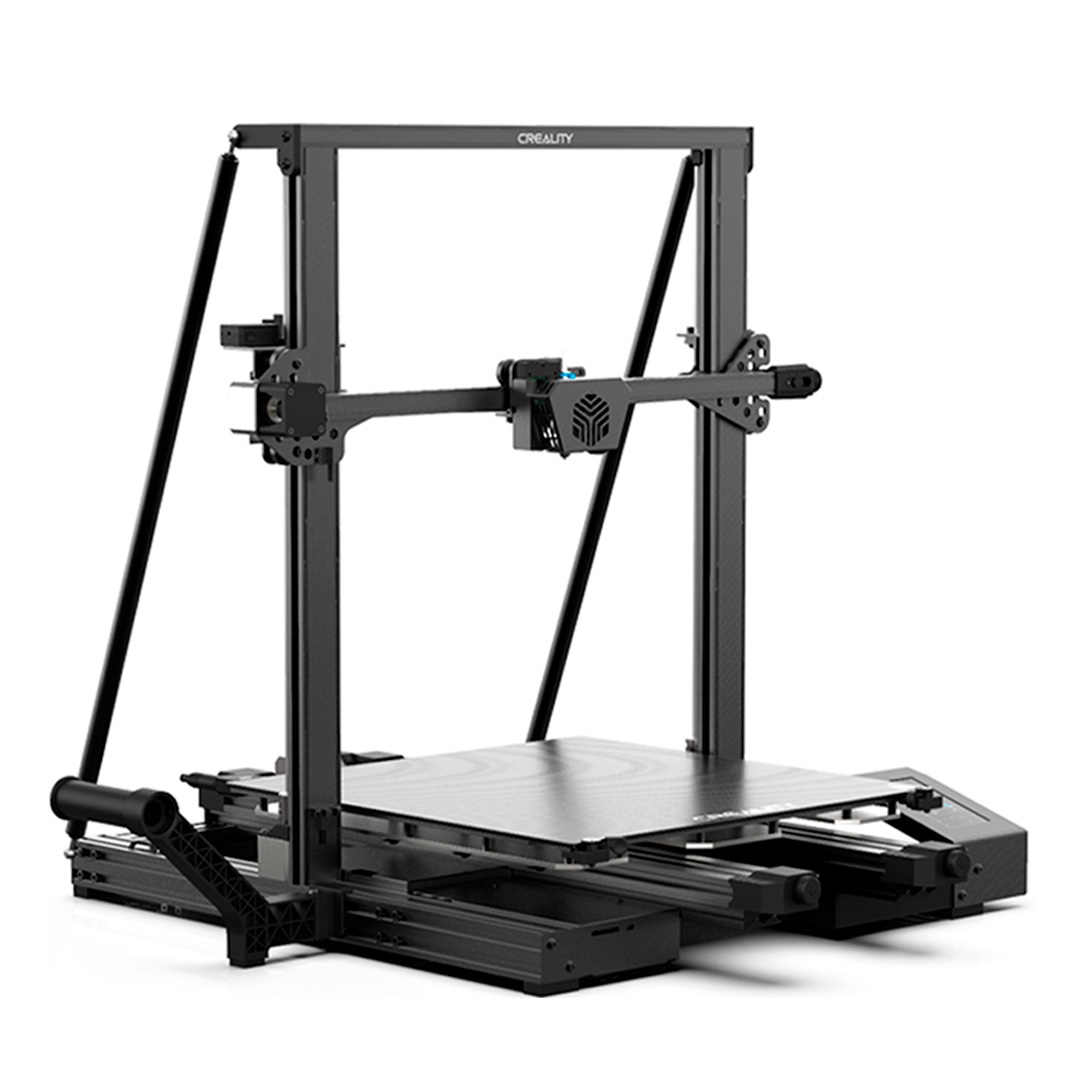Compare Replicator Plus vs CR 6 Max
Comparison between the best 3D printers
Choose the best 3D printer at the best price. The cheapest 3D printers are here.
Buy a 3D printer here with 3D Fila.
 |
 |
|
| Model | Replicator Plus |
CR 6 Max |
| Printing Material | Filament | Filament |
| Buy Filament for Makerbot Replicator Plus | Buy Filament forCreality 3D CR 6 Max | |
| Estimated price | $2099,00 | $700,00 |
| Manufacturer | Makerbot | Creality 3D |
| Release Year | 2016 | 2021 |
| Print Volume [mm] | 165x295x195 | 400x400x400 |
| Printer Size [mm] | 410x528x441 | 725x640x691 |
| Weight [kg] | 18,3 | 14 |
| Power Loss Recovery | YES | YES |
| Enclosed printer | NO | NO |
| Bed Leveling | Automatic | Automatic |
| Filament End Sensor | YES | YES |
| Bed type | Heated | |
| Power supply system | Bowden | Bowden |
| Standard nozzle | 0,4 | 0,4 |
| Maximum Nozzle Temperature [°C] | 230 | 260 |
| Maximum Bed Temperature [°C] | 90 | |
| Maximum printing speed [mm/s] | 150 | 100 |
| Filament holder | YES | YES |
| Camera for supervision | YES | YES |
| Recommended filaments | PLA | PLA, PETG |
| Recommended slicers | MakerBot Print Software | Cura, Simplify, Slic3r, IdeaMaker |
| Maximum Resolution [mm] | 0,1 | 0,1 |
| Processor | ||
| Display | Display touchscreen 4,3'' | |
| Power Supply | 110/220V / 240W | 110/220V / 500W |
| Connectivity | USB / Wi-Fi | SD / USB |
| Operating systems | Windows, Mac, Linux | Windows, Mac, Linux |
| Date of registration in the system | 2022-11-15 | 2022-11-04 |
| Release date | 2016 | 2021 |
| Extra features | The Replicator Plus printer is easy to use and has very good print quality. Its software is user-friendly and powerful, with USB, Ethernet, Wi-Fi and support for printing via pen drive. With a safe design for an open frame printer, it is relatively quiet. The Smart Extruder+ detects filament end and pauses printing automatically, in addition to notifying via apps. It has a large print volume, with a non-heated and coated print bed for easy removal of parts. It also has a webcam for remote monitoring of prints. | Crealitys CR-6 Max printer offers a large 400 x 400 x 400mm build area, perfect for larger projects without dividers. Its auto-leveling system and force sensor simplify setup. It has a 4.3-inch touchscreen and convenient features like a tool drawer and filament holder. Plus, its modular hotend, redesigned extruder, and silicon carbide-coated build plate improve print quality. |
| Support for multiple colors and materials (AMS and CFS) | NO | NO |
Notes * |
||
| Cost-benefit | 6 / 10 | 6 / 10 |
| Hardware | 2.5 / 10 | 2.4 / 10 |
| Tela | . | . |
| Print volume | 3 / 10 | 4 / 10 |
| Performance | 1 / 10 | 1 / 10 |
Conclusion |
| In assessing the MakerBot Replicator Plus and the Creality 3D CR-6 Max, several critical factors, including price, build volume, and features, emerge as key differentiators between these two 3D printers. The MakerBot Replicator Plus, while positioned at a higher price point, is recognized for its user-friendly software and good print quality. Its compact build size and features like a webcam and smart extruder add to its appeal for users who prioritize ease of use and reliable performance. However, its limited print volume may restrict larger projects, making it less versatile for certain applications. In contrast, the Creality 3D CR-6 Max provides a significantly larger print volume, accommodating expansive projects and offering greater versatility. Despite a lower price, its quality is enhanced by features such as an auto-leveling system, modular design, and a silicon carbide-coated build plate, which collectively improve the overall printing experience. Although its performance scores are slightly lower in some categories, it presents an impressive cost-benefit ratio. Ultimately, the choice between these two models boils down to user needs and budget considerations. For those seeking an easy-to-use printer with good software support and excellent print quality for smaller projects, the MakerBot Replicator Plus represents a strong option. Conversely, if you require a more extensive print volume at a lower cost, the Creality 3D CR-6 Max stands out as a highly capable alternative. Each printer has its strengths, making the decision largely dependent on specific printing requirements and financial considerations. |

